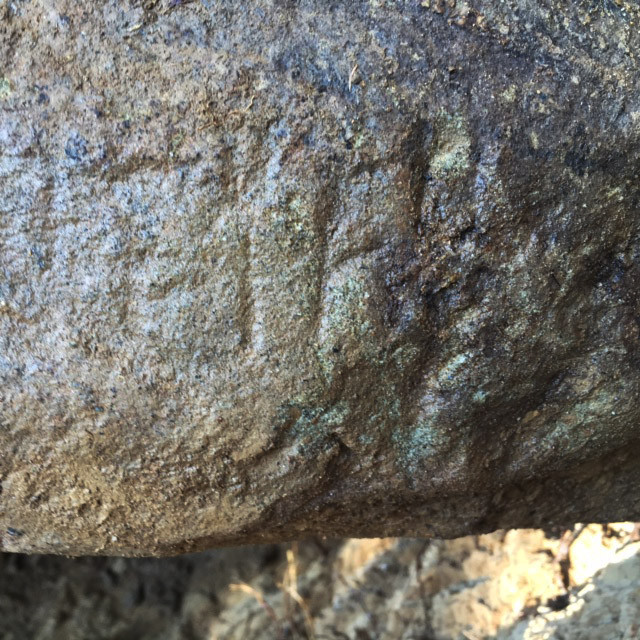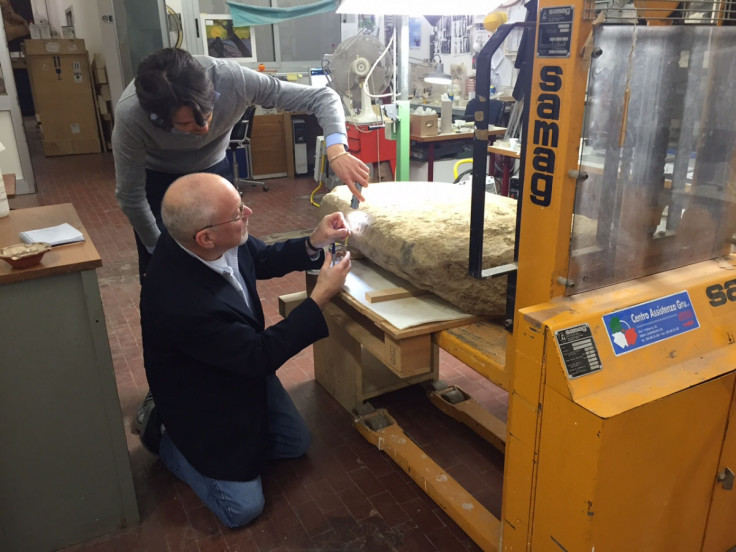Rare sacred text depicting god or goddess to shed light on ancient Etruscans

A rare sacred text found in the depth of an old Etruscan temple could shed light on the culture and religion of the Etruscans. Researchers believe the ancient slab refers to the worship of a god or goddess and could shed light on the civilisation and its religious beliefs.
Archaeologists made this unique discovery at the Mugello Valley dig, north-east of the Italian city of Florence. The lengthy text had been buried in the foundations of the monumental temple for more than 2,500 years. The words, in the Etruscan language, are inscribed on a large sandstone slab, weighing more than 500 pounds, and reaching up to four feet in height and two feet in width.
The finding is particularly important, because very few writings survive from the Etruscan era, which lasted from approximately 800-400 BC. Until now most of the Etruscan texts have been discovered on graves and related to funeral traditions. Whereas this is a sacred text, with a completely different purpose, making it all the more special.
"Inscriptions of more than a few words, on permanent materials, are rare for the Etruscans, who tended to use perishable media like linen cloth books or wax tablets," explains Jean MacIntosh Turfa, Etruscan scholar from the University of Pennsylvania Museum.
"This stone stele is evidence of a permanent religious cult with monumental dedications, at least as early as the Late Archaic Period, from about 525 to 480 BCE".
Advancing religious knowledge
Due to the passing of time, only 70 words and punctuation marks are still visible, but archaeologists share Turfa's hope that analysing the stele will advance knowledge about Etruscan culture, on at least two counts.

First, they believe the words will give them access to the name of the god and goddess revered in this particular Etruscan temple.
Over the years, many objects and religious artefacts have been uncovered from the Mugello Valley dig, each time giving archaeologists fresh clues about daily life and organisation under Etruscan power. The basics of Etruscan language were also mastered, thanks to the funeral texts discovered. Yet, up to now, Mugello Valley Archaeological Project experts, who made the discovery, had never had such an opportunity to learn more about the deities adored on the site.
"We know how Etruscan grammar works, what's a verb, what's an object, some of the words. But we hope this will reveal the name of the god or goddess that is worshipped at this site," says archaeologist Gregory Warden, principal investigator of the Mugello Valley Archaeological Project.
Enriching the language
Second, the archaeologists believe that the analysis of the text will enrich their knowledge of Etruscan language itself. "We hope to make inroads into the Etruscan language," Warden points out. "Long inscriptions are rare, especially one this long, so there will be new words that we have never seen before, since it is not a funerary text."

The sacred text will now go through a complete conservation process, fully documented with photogrammetry and laser scanning, at the conservation laboratories of the Tuscan Archaeological Superintendency in Florence. And once the stele is cleaned up, Etruscans experts will be there, waiting to uncover new secrets about the ancient civilisation and its spiritual beliefs.
© Copyright IBTimes 2025. All rights reserved.






















